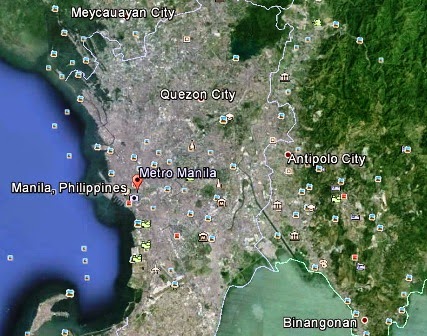WHY IS CHINA NOT A FAN OF THE PHILIPPINES?
by Antonio C. Antonio
April 30, 2014
“Why is China not a fan of the Philippines?”
is really a very intriguing question. A
quick review of Philippine exports will indicate that most of our natural
resources (especially mineral products) are being exported to China. But in spite of this, China is not too fond
of us. Really… Why should a super power like China be a
“fan” of a country like the Philippines?
There is a broad spectrum of reasons why China
is not a fan of the Philippines. Please
allow me to narrow down these reasons to only three which I understand are the
main concerns…
First: The
territorial claims. The Philippines and
China are locked in a territorial dispute in the West Philippine Sea (Filipino
map) and the South China Sea (Chinese map).
The West Philippine Sea has closer proximity to the Philippines than
South China Sea to mainland China.
Following the Chinese argument that this body of water (and everything
in it) belongs to them simply because it was traditionally named “South China
Sea”, then Australia (especially Perth) have a lot to worry about with “India”
since their western coast faces up to what is traditionally called the South “Indian”
Ocean. If this is the case, Australia
should be well-advised to re-name this body of water “West Australia Ocean”
before India serves them a claimant’s notice.
This sort of argument makes China seem unreasonable in the eyes of the
world.
Being right or wrong in territorial disputes
oftentimes is not that important than who actually controls the disputed area. Right now, the Philippine Navy has nine mighty
Marines on board the junked and grounded BRP Sierra Madre on the Ayungin Shoal
to show that we own the place. On the
other hand, China has nine maritime vessels, nine planes and nine armed
divisions on Mischief Reef. Isn’t this a
mismatch? Military superiority, however,
doesn’t make China right. There are international
maritime laws that have to be respected such as the United Nations Convention
on the Law of the Sea (UNCLOS).
Second:
MDT (Mutual Defense Treaty) of 1951 and EDCA (Enhanced Defense
Cooperation Agreement) of 2014. The
visit of US President Barak H. Obama to Manila last April 28 and 29, 2014
resulted to the signing of the EDCA which solidified the military alliance
between the US and the Philippines… although the visit seem to have done little
to improve the relationship between the Philippines and China. With an “ironclad” commitment to defend the
Philippines from the invasive aggression from any foreign country, the US gave
notice to China to lean back on their bullying tactics in the West Philippine
Sea. Now, I really want to see if Yao Ming
will still dare to bully tiny LA Tenorio now that big brother Lebron James
wears a Ginebra San Miguel uniform.
Stephen Collison of Agence France-Presse
reported today that a Chinese government-run news agency called the Philippines
a “troublemaking ally” of the United States.
The Filipino’s “amboy” image is a result of five decades of cooperative
partnership and friendship between the Americans and Filipinos as evidenced by
the MDT and the EDCA. (“Amboy” is a
1970s slang that means “American boy.”)
Even if the EDCA did not strengthen the Philippine Armed Forces in terms
of state-of-the-art military hardware, it is hopefully a step forward in
improving our independent capability to defend ourselves sooner or later. Let us hope, further, that we are not
satisfied and end up complaisant by the “bragging rights” that EDCA
provides. But come to think of it, Robin
Padilla was right to say: “Bragging is
not a crime.” (Hindi krimen ang
kayabangan.) But braggadocio does not
win disputes either.
Third: The
Trans-Pacific Partnership Agreement (TPP).
The TPP is a free trade agreement being negotiated by nine APEC
(Asia-Pacific Economic Cooperation) – member countries: The United States, Australia, Brunei
Darussalam, Chile, Malaysia, New Zealand, Peru, Singapore and Vietnam. Curiously, the Philippines was not even part
of the TPP in its inception. Pres.
Obama, however, in his visit to Manila, was trying to sell this particular
agreement to the Filipinos. With this in
the background, why should China worry about TPP? China is undeniably a risen super power in
Asia and they know their economic position of influence in the region. But the TPP, however, is largely seen as a
grand design to organize the Asia-Pacific region into an economic zone with the
United States in the middle of this free trade economic alignment. By all means, China does not like this. An economic superstar like China will always
want to see its name at the top of the marquee.
Given the perception that the Philippines is
an “Amboy”, China believes that the Philippines will blindly sign the TPP. The display of warmth from the Filipino
people and the friendly promises of protection from Mr. Obama earlier this week
was enough to make the Chinese believe that the TPP is a done deal.
These three reasons plus a lot more that you
can think of makes it easy to understand why is China not a fan of the
Philippines.
Just my little thoughts…




